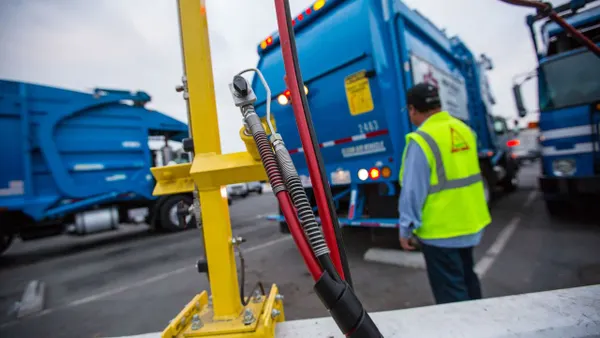Dive Brief:
- In a survey done this month, the Grocery Manufacturers Association found that 87% of products now carry "Best If Used By" and "Use By" labels and that consumers find them helpful. The GMA and the Food Marketing Institute launched the campaign last year to help reduce consumer confusion about product date labeling.
- A report on the survey notes 88% of respondents find the labeling options were clear, and 85% say it would be helpful if manufacturers shifted to using only those two labels. Asked how the date labels would assist them, the top benefits listed were feeling safer about the foods they eat, believing they would throw less away, saving money by throwing less away and feeling more confident in the products they use.
- "Our industry is committed to empowering consumers to make informed decisions about the products they bring into their homes," GMA President and CEO Geoff Freeman said in a release. "This is a proactive industry that put forward a proactive solution to give American families the confidence and trust they deserve in the goods they buy."
Dive Insight:
Consumer confusion regarding date labels has been a persistent problem. Food and beverage products might sport the words "sell by," "enjoy by," "fresh until," "display until," "best before" and other wording options — and most of them aren't very clear. A 2017 poll from GMA and Food Policy Action found that 60% of Americans had discussed at home what the date labels on grocery products meant, while 40% had had disagreements about throwing products away.
Food waste is the other major problem related to date labels. If consumers can't determine whether a product is still good, most are likely to toss it. GMA found 44% of people throw food away because of label dates, 30% make the decision based on how the item looks, and 24% rely on the sniff test.
According to the U.S. Department of Agriculture, food waste is estimated to be 30% to 40% of the food supply. There are other drivers behind food waste, however — including simply buying too much or buying something and forgetting about it. Fresh produce is particularly prone to the latter problem, with 39% of food waste composed of discarded fruits and vegetables.
If consistent date label use results in fewer food products being thrown out, the result could be a positive development for the environment. More food ends up in landfills than any other single material, according to the U.S. Environmental Protection Agency — and since an estimated 16% of methane emissions comes from landfills, diverting the food waste stream could help reduce greenhouse gases.
The "Best If Used By" and "Use By" labels seem to be making a difference for consumers. The GMA survey found 88% of respondents consider them clear, and 85% say it would help if manufacturers only used those two labels. This may be the case before long: the report says that CPG companies anticipate 98% of their products will have the new labels by next year, and that 100% adoption will be achieved by January 2020.










